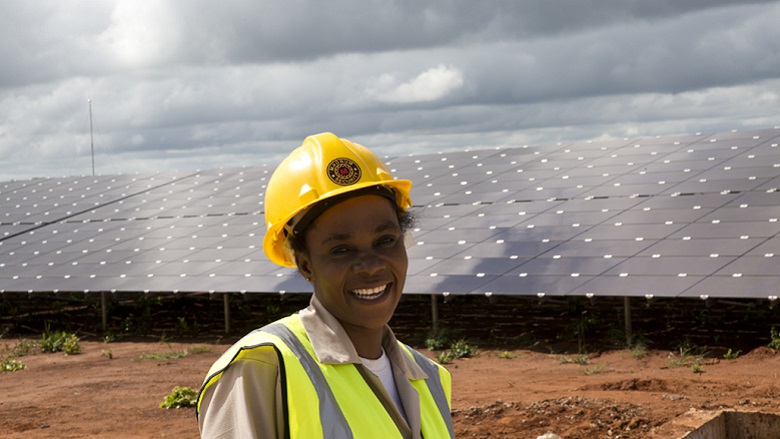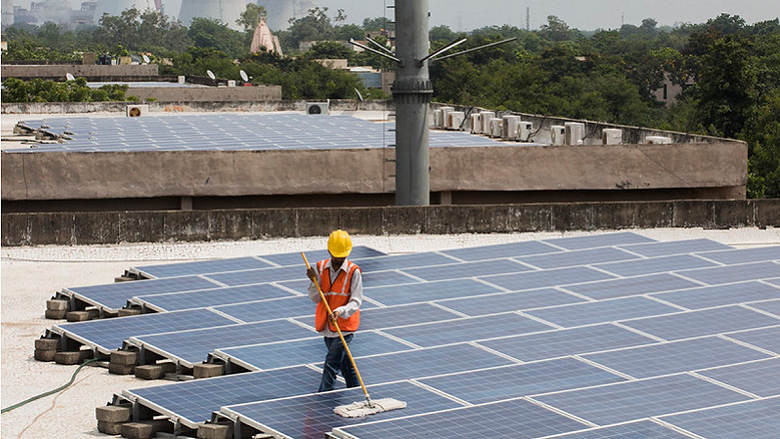In early 2019, two large-scale solar photovoltaic plants began powering tens of thousands of homes and businesses in Lusaka, reducing rolling blackouts caused by the country’s drought-affected hydroelectric system.
In 2017 and 2018, the annual amount of climate finance globally crossed the half-trillion-dollar mark for the first time.
Through 2030, a shift to low-carbon, climate change-resilient economies could bring $26 trillion in economic benefits and create over 65 million jobs, according to the Global Commission on the Economy and Climate.
“This is exactly the right time to look at how we can make climate finance more effective and more impactful,” says Marc Sadler, Manager of the Climate Funds Management unit at the World Bank.
“Not only do we see an increased realization of the economic benefits of clean development pathways, along with decreasing costs for clean technology, but there is also a clear need for a more transformative climate finance system.”
Unleashing the Clean Energy Transformation at Scale
The solar plants were the first to become operational under a World Bank Group program, Scaling Solar, that lays the groundwork for PV plant development while also providing financing and other tools and services to make solar development easier and more affordable in developing countries. Scaling Solar aims to streamline the solar development process and reduce risks for governments and private investors looking to expand access to renewable energy.
“Our goal is to create markets for solar power where they do not already exist, to help countries expand and diversify their energy supply, and to close gaps in access to sustainable reliable electricity,” says Emmanuel B. Nyirinkindi, Director, IFC Transaction Advisory Services. “Through Scaling Solar, we are expanding opportunities for economic growth, jobs, education, health and other benefits that come with greater electricity access.”
Scaling Solar reduced the cost of solar power development in Zambia by attracting international solar developers to the projects. It also leveraged the falling costs for developing utility-scale solar photovoltaic in large markets in Europe and North America. In May 2016, a competitive bidding process, organized by the Scaling Solar program, secured for Zambia the lowest solar price in Africa to that date -- 6.02 US cents per kilowatt hour.
Two years later, Senegal’s Scaling Solar project achieved tariffs of 3.80 and 3.90 Euro cents per kilowatt hour—representing a price cut of approximately 60 percent compared to previous solar deals in the country. Once the plants are built, this will constitute Senegal’s cheapest utility energy source. Scaling Solar has since expanded into Afghanistan, Côte d’Ivoire, Madagascar, Togo and Uzbekistan.
Addressing Energy Access
A new report, Transformative Climate Finance, identifies eight ways policy-makers can drive clean, resilient growth -- through project-based investments, financial sector reform, fiscal policy, sectoral policies, trade policy, innovation, carbon markets, and climate intelligence products such as climate vulnerability maps and early warning technologies.
The World Bank is helping countries adopt emerging approaches to electricity service delivery and deploy technological innovations that have substantially increased the number of households with service in a short amount of time. In Ethiopia, for example, a $375 million program supports both on-grid and off-grid efforts, with a focus on connecting schools and clinics.
In Egypt, the government worked with the World Bank Group to address energy shortages and reform the energy sector. A key part of the program was to develop solar power. The Benban Solar Park is the country’s first photovoltaic solar park stretching over 37-square kilometers. When fully operational, it will generate over 2,000 megawatts of power, employ 4,000 people, and avoid 2 million tons of greenhouse gas emissions a year, the equivalent of taking about 400,000 cars off the road. The World Bank supported reforms to Egypt’s electricity sector and provided the country with a $3 billion loan, while the Multilateral Investment and Guarantee Agency, provided $210 million worth of political risk insurance to encourage private lenders to invest.


